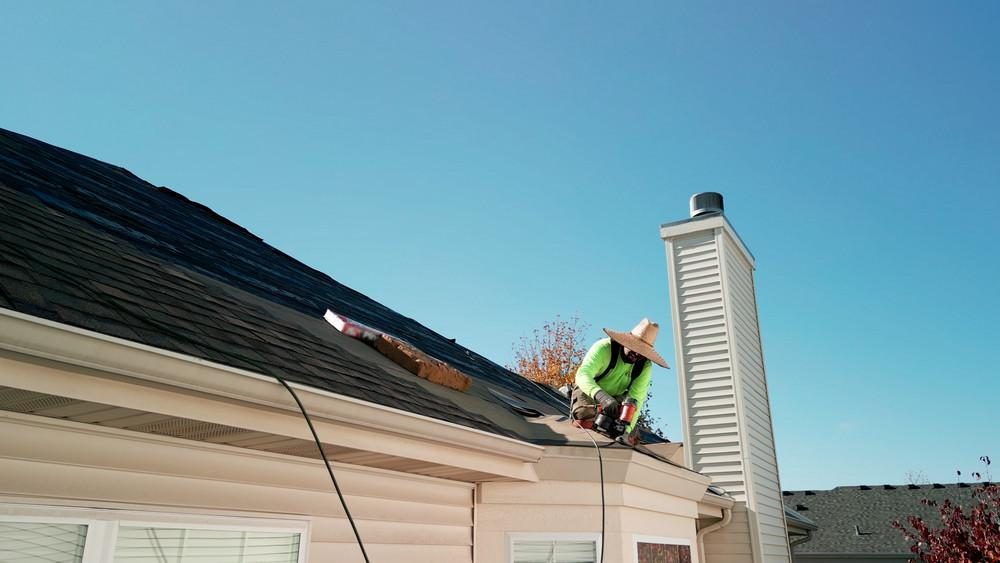Roofing by the Numbers: Asphalt Shingles, Roof Lifespans, and the Rise of Stone-Coated Steel

When it comes to roofing materials for homes in North America, asphalt shingles dominate the landscape. According to the Roofer’s Guild, these shingles cover roughly 75% of residential roofs in the region. The appeal of asphalt shingles lies in their cost-effectiveness, ease of installation, and a broad array of styles and colors. For homeowners seeking to maintain aesthetic appeal while adhering to a budget, asphalt shingles offer a respectable solution. Despite their popularity, it’s crucial for homeowners to weigh both the advantages and limitations inherent to asphalt shingles.
The choice of a roof extends beyond aesthetics and affordability, impacting the overall value and safety of a home. Asphalt shingles, while inexpensive and readily available, have variable lifespans depending on their quality and the climate they endure. It is essential for homeowners to understand that regular maintenance can substantially influence the durability of these roofs. By keeping gutters clean, promptly addressing missing shingles, and conducting annual inspections, homeowners can prolong the life of their roof. Homebuyers should also consider that the visual appeal of an asphalt shingle roof can enhance curb appeal and potentially attract prospective buyers.
In the roofing industry, asphalt shingles have long set the standard, yet they aren’t void of disadvantages. Homeowners should be aware that asphalt roofs typically fall into a lifespan range of 15 to 30 years, unless affected by severe weather conditions. Such lifespans mean that regular replacements are a significant consideration in long-term homeownership costs. While they provide essential weather protection, asphalt shingles may not fare well under extreme weather conditions without sustaining damage. As home improvement trends evolve, some homeowners are examining alternative roofing materials that might offer enhanced durability and performance.
Understanding Roof Lifespans: How Long Can Your Roof Last?
The expected lifespan of a roof stands as one of the pivotal factors influencing a homeowner’s decision in selecting roofing materials. According to RubyHome, the average longevity of a roof spans from 25 to 50 years, depending significantly on the type of roof and the quality of materials used. Factors such as climate, maintenance, and installation quality also play critical roles in determining a roof’s lifespan. For homeowners, selecting a roofing material with the best lifespan-to-cost ratio can be a worthy investment. Evaluating these factors comprehensively can ensure that one’s home remains safe and structurally sound for decades.
The roofing industry continues evolving, and so do advances in materials that promote longer lifespans. Technologies today focus on optimizing durability while reducing material waste. For instance, metal roofs, which range at the higher end of the lifespan spectrum, bring added durability and less frequent need for replacement. Though initially more costly than asphalt shingles, they may prove more economical in the long term considering lower maintenance and infrequent replacement demands. Investing in higher-quality roofing can preserve home integrity while potentially elevating property value.
The Emergence of Stone-Coated Steel Roofing
In recent years, the roofing industry has witnessed a growing interest in stone-coated steel roofing due to its impressive combination of durability and aesthetic flexibility. Stone-coated steel roofing is not only lightweight, but it also boasts a Class A fire rating and considerable resistance to impacts, such as hail. This roofing option weighs merely 1.4 lbs per square foot, which reduces the stress on a home’s structure. Furthermore, for environmentally-conscious homeowners, stone-coated steel is an attractive option since it is 100% recyclable. As an innovative solution in the roofing sector, it merges long-term reliability with environmental responsibility.
The sustainability of stone-coated steel adds further appeal for many homeowners looking for durable yet eco-friendly roofing. This roofing material stands out due to its considerable resistance to extreme weather conditions, including high winds and heavy snowfall. This durability can translate to fewer repairs and replacements, making it a viable long-term investment for many homeowners. The versatility in design choices also allows homeowners to match their roofs to the architectural style of their homes while providing all the benefits of modern roofing technology. As more consumers prioritize sustainable building materials, stone-coated steel is likely to become a more prevalent choice in home construction and renovation.
Homeowners exploring stone-coated steel roofs will find a plethora of advantages, from extended durability to aesthetic variety. The use of steel as a core material ensures immense strength, while the stone coating provides a visually pleasing finish reminiscent of traditional materials like tiles or wood shakes. This roofing type can withstand diverse weather impacts better than many alternatives, making it a sensible choice in areas prone to harsh environmental conditions. With these attributes, homeowners may benefit from lower insurance premiums and heightened property values. As the demand for resilient and environmentally sustainable homes grows, stone-coated steel remains a practical and increasingly popular option.
